
Types of the 3¢ Washington: Flat Plate and Rotary
Types I and II
Five Areas that Distinguish Types I and II
Only the flat plate and rotary press printings of the 3¢ Washington have the following types. If your stamp is offset, you are on the wrong page and should go here: Types of the 3¢ Offset Washington.
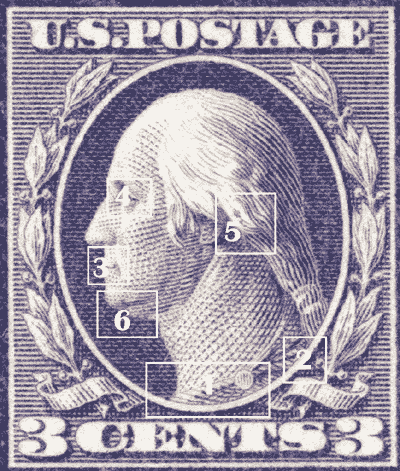
| Area on Map | Part of Design | Side by Side Comparison |
| 1 | Toga Rope and Button | Type I vs Type II |
| 2 | Portrait Oval | Type I vs Type II |
| 3 | Shape of Mouth | Type I vs Type II |
| 4 | Eye and Eyebrows | Type I vs Type II |
| 5 | Locks of Hair | Type I vs Type II |
| 6 | Shading in Chin | Type I vs Type II |
Methods of Printing for the Washington Franklin Stamps
The key to identifying these stamps is to examine the toga rope. The student of the Washington Franklin Heads has no doubt noticed the similarity in identifying the Type I and Type II stamps of both the 2¢ and 3¢ issues in this regard. It might be a good idea to examine the toga rope of the 3¢ Types at length, since copies of both the Type I and Type II are readily, and inexpensively, available. Since the 2c shares the same features, familiarizing oneself with the 3¢ variations will be of great aid in distinguishing the varieties of the 2¢ issue.
In the case of a cancellation covering one of the identification areas, or if the ink is light, you will need to examine many of the areas. In particular, if you think the stamp is a scarcer variety, you should examine all of the areas for positive identification. A powerful magnifying glass, microscope, or a high resolution scan (600 to 1200 dpi) will greatly aid in identifying the type.
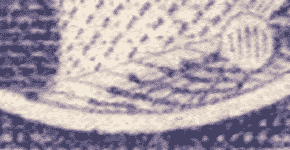
Toga Rope and Button
Type I
The lines at the top of the toga rope and around the toga button are poorly defined. The lines of the rope are wider at the bottom than at the top.
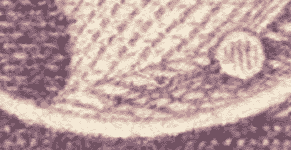
Toga Rope and Button
Type II
The lines at the top of the toga rope and around the toga button are strong and well defined. The lines of the rope are relatively consistent from top to bottom.
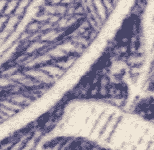
Portrait Oval Frame
Type I
The line of the inner circle of the portrait oval is well defined and forms a solid line.
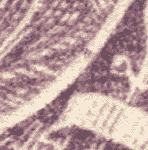
Portrait Oval Frame
Type II
The line of the inner circle of the portrait oval is weak and broken in places.
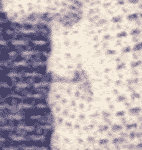
Shape of the Mouth
Type I
The line forming the mouth is thinner and straighter than in the Type II. In some cases, as in the image above, it curves slightly upward (smiles).
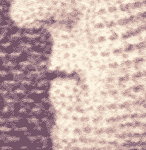
Shape of the Mouth
Type II
The line forming the mouth is thicker, and curves slightly downward (frowns).
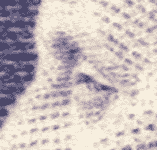
Shading in the Eyes
Type I
The engraved lines that form the eye are much weaker than in the Type II. The eyebrow is not as well-defined.
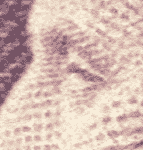
Shading in the Eyes
Type II
The engraved lines that form the eye are stronger when compared to the surrounding design than in the Type I. Notice how well the eyebrow is defined. This is a weak example of this type and yet the eyebrow is quite distinct.
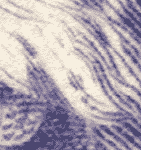
Locks of Hair
Type I
The locks of hair to the right of the ear are less well defined in the Type I than the Type II. The bottom line of shading is much shorter in the Type I.
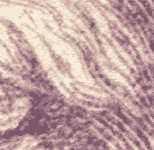
Locks of Hair
Type II
The locks of hair to the right of the ear are better defined in the Type II than the Type I. The bottom line of shading is much longer in the Type II than the Type I.
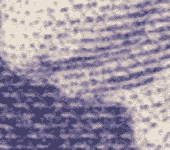
Definition in Chin
Type I
Notice the two strong lines under Washington's chin. This is a strongly printed copy, on weaker copies the lines are even more pronounced.
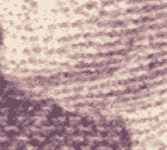
Definition in Chin
Type II
The two lines under Washington's chin are not nearly as strong in the Type I stamp.





